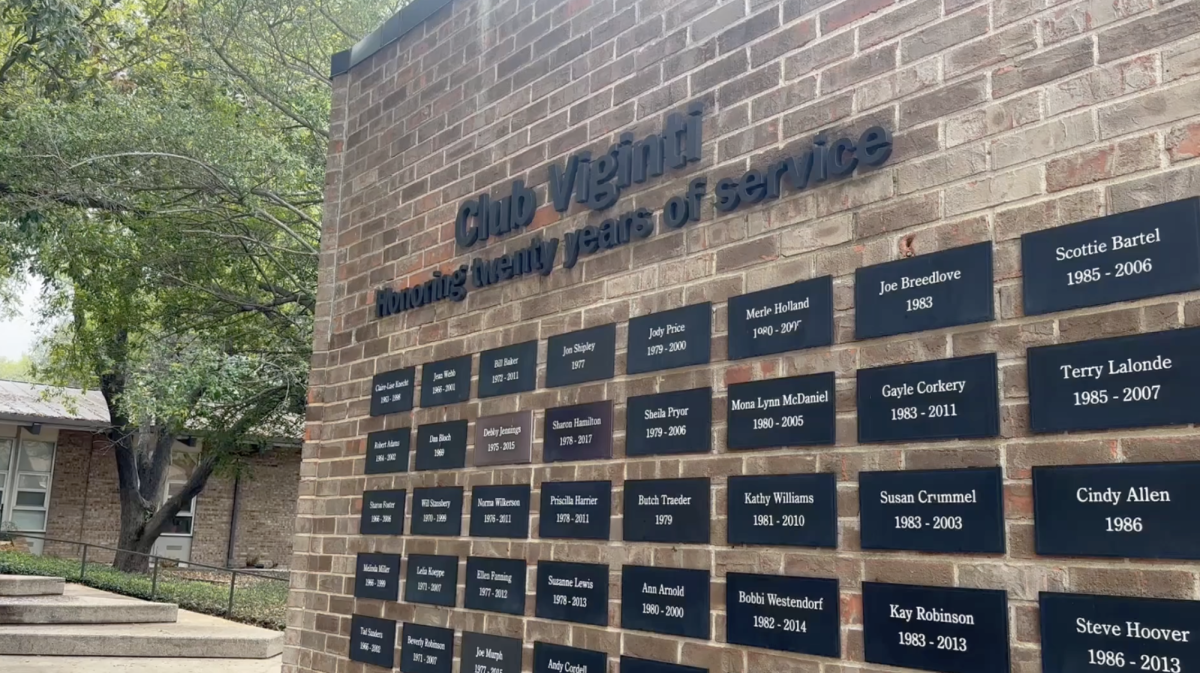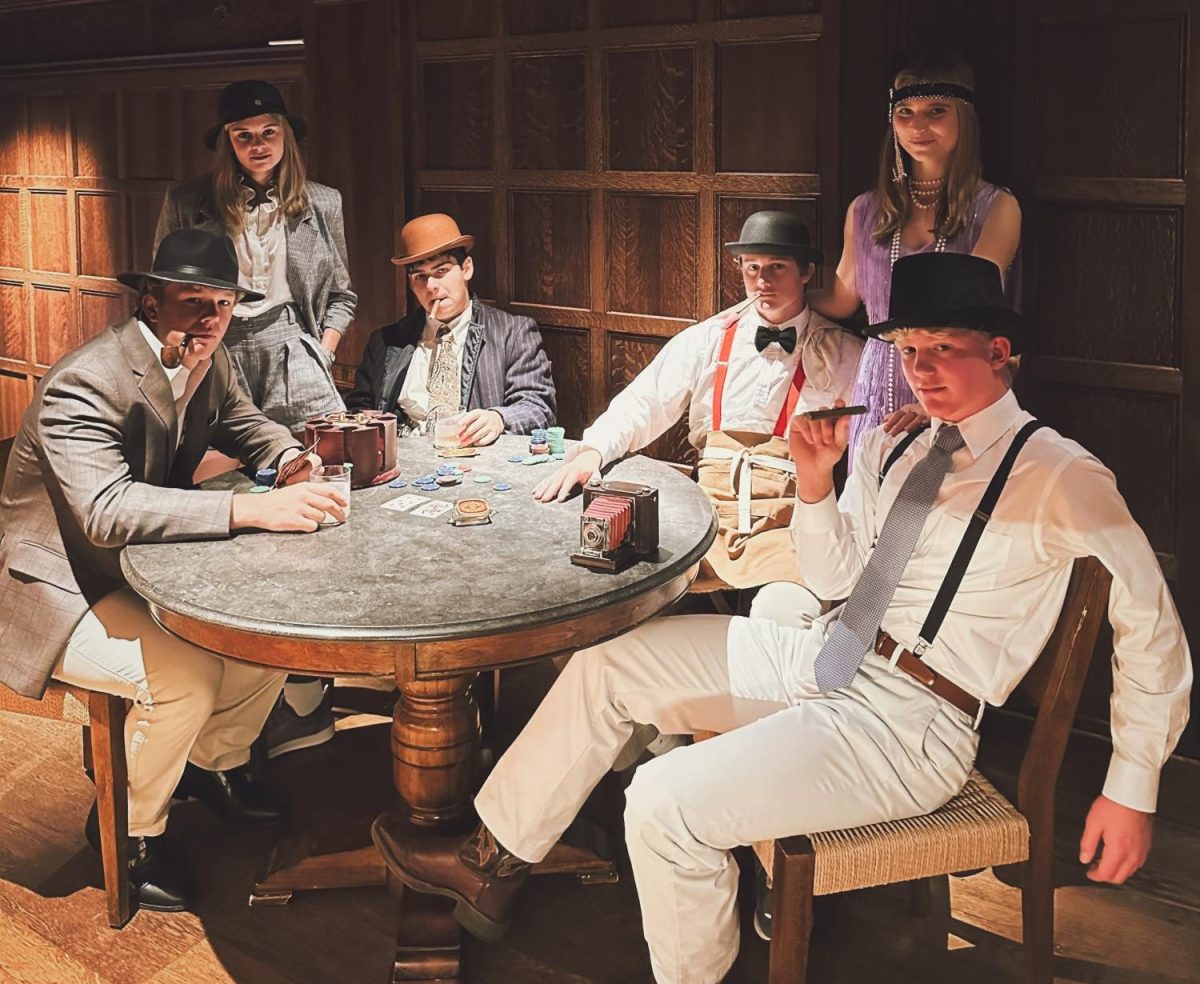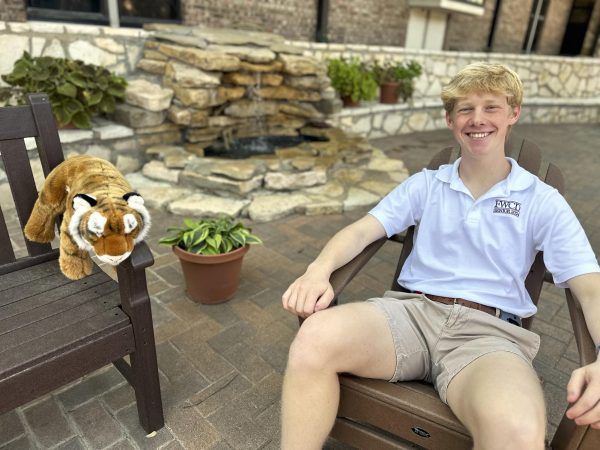Should Fort Worth Country Day ever embark on a capital campaign for a Mount Rushmore inspired statue overlooking the campus from the ropes course, instead of renovating the Upper School, Evelyn Siegel would undoubtedly have her likeness carved into stone. Starting at FWCD as an art teacher in 1968 and eventually retiring as head of the art department in 1984, Siegel has made an everlasting impact on the FWCD community.
Beyond her years of service as an educator and mentor to many, her legacy endures at FWCD in the form of a historic pottery collection. In 1981, Siegel donated a sizable portion of her own collection of American Southwest Native American pottery which now sits permanently on display in the Moncrief Library. In February of 2023, Siegel returned to campus to reminisce with The Falcon Quill.
Quill: How did you get started at Fort Worth Country Day? What’s your story with the school?
Evelyn Siegel: Well, I had four little boys…. When the school started, Mr. Siegel and I put our four boys, that were school age, in the school. My husband had had private school in the east. So when Country Day was being formed, we were invited to send our children and we did. When Terry [Siegel ’71] was in about the fourth grade, he came home from school one day and said, “Mom, we don’t have art anymore.” Well, I never knew that he did have art, so I came out to school to see what the art situation was because I had taught art back in South Carolina, Columbia High School, which is nonexistent today. We were in a prefab, an army prefab at what is now the theater building. I mean that’s all gone; there was a fountain there and a prefab, an army prefab. Half of it was music, half of it was art. Two people had [been teaching art classes]. The first one left… and the second one left… and Terry came home and he said, “We don’t have art anymore, Mom. There’s no one to teach.” So I called Mr. Schwartz [then headmaster of the school] and I said, “I’m capable of teaching these children. Would you like to have me come out?” And he said, “Please do.” And I did. And the rest is history. [Fort Worth Country Day Art Department 1968-84]
Quill: How did your love for the arts begin?
Siegel: Well, I went to a very good elementary school. Just a plain, old, public elementary school. And they did a lot of things with the city in art. Not necessarily visual art, but music particularly because we had a college that had a music department and they would have concerts and we could pay fifty cents and go. That’s how much everything cost back then. Anyway, I always had a good art teacher in elementary school. And believe it or not, 90 years later, I’m still in love with clay. And I think that teacher gave me the love of clay because she had clay in her classroom.
Quill: What is the story of the Native American pottery in the library?
Siegel: I traveled around [the southwest] with my husband a little bit; he drove from one place to the next…. It was that area where I visited antique shops and I fell in love with these little pots and I bought them. And they were very cheap; they were these little pots, probably three or four dollars apiece. And when I saw them, I thought, well, I’d like to have those. I’ve always been a collector of something artistic. And so I bought a few. And then I found out about Maria [Martinez]. Maria was a Native American woman who became very, very, very popular for her blackware…. I collected what I could afford. It wasn’t popular to collect anything. It was in Santa Fe and beyond. All these funny little towns, these little nothing kinda stores would have one little pot, another little pot, and I brought them home. I was fascinated by them and there wasn’t a whole lot written about them, but I had a friend in Aspen, Colorado, who was very much into Native American art and he told me some little primary books to look at. He was really into Native American antiques. He bought and sold really expensive ones, and he had some that were just so-so. So, I asked if he had some that I could afford and he said, “Sure.” In fact, he gave me a couple of those that you [FWCD] have in the case. That’s the story of how I started acquiring.
Betty [Slayton] taught fourth grade, and she taught a unit on Native American history. In that [unit] she had art, so I thought, “Aha. This is an opportunity to show these little pots off,” so I brought them to school. I told you my husband was in the kitchen cabinet business; he manufactured a long, little showcase for me, all glass, like the one that is in the library, but miniature. It went across the wall from door to door, and I put the little pots in there. They [the pots] caused quite a stir; everybody wanted to know where they came from. They were nothing out of the ordinary to people who like things like that, but that was how they got to School. So, when we built the art department, I didn’t see any space for them, and so I said to the librarian then, “Would you like to have those [the pots] in the library?” And she said, “Could we?” And I said, “I’ll ask Martin [my husband] if I can get a case built.” I got a very fine cabinet maker to make that cabinet and it opens from two sides. You can walk around it and see it from two sides. That’s the story of them getting to the library. I thought it was a shame to put them up, [because] there weren’t that many. I had about six or eight in that case in the hall when I brought them up here. I put a few more in, maybe six or eight more. That’s the story. It’s no great love story; it’s just something I thought kids would enjoy.
Quill: What do you hope the legacy of your gift of the pottery to FWCD will be?
Siegel: I hope they [FWCD] will show interest in it. I hope they will… want to know more about them. Maybe a history teacher would introduce early Americans; that’s what they [Native Americans] were, to the students. They wouldn’t know what they are. I mean, they’re beautiful pots, but they don’t know why they were made and how they were made and what they did with them…. If you’re really a student or a teacher that wants to know about the pots, it has as much history as we do.















